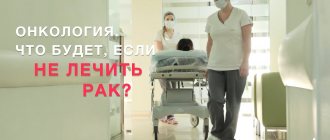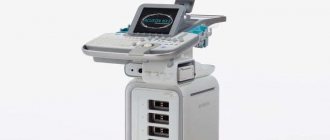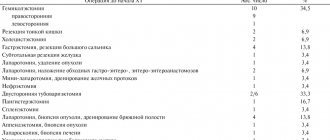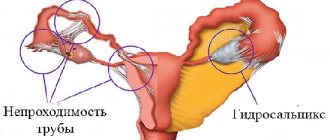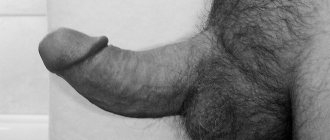Magnetotherapy (16) Infrared and phototherapy (10) Vibroacoustic therapy (6) Laser therapy (4) Quantum therapy (2) Thermotherapy (3) Electrophoresis and Galvanization (5) Electrical stimulation (3)
The physiotherapeutic procedure of magnetotherapy is one of the methods of alternative medicine, the basis of which is the effect of magnetic fields (magnetic fields) on diseased areas of the body or a complex effect on the entire body. Magnetotherapy – physiotherapeutic treatment (PTL) with various types of MP:
- permanent;
- variables.
The second type of MF is low- and high-frequency.
Its choice depends on the type of disease and characteristics of the patient. Magnetotherapy 10 FTL is a standard course of procedures used for treatment, prevention or during rehabilitation.
Magnetic therapy, indications:
- diseases of the spine;
- fractures and injuries;
- inflammatory processes;
- pathologies of the genitourinary system;
- bronchopulmonary diseases, etc.
Carrying out a physiotherapeutic magnetic therapy procedure:
- Magnetic plates are applied to the diseased area in a certain order.
- The power of the device is selected and the voltage is turned on.
- Magnetic pulses begin to penetrate into the patient's body to varying depths.
- The body's response to magnetic impulses triggers the healing process.
- After the time has elapsed, the electrode plates are removed from the treatment area.
The main condition for FTL, especially magnetic therapy, is the consistent implementation of procedures in accordance with medical prescriptions and the elimination of existing restrictions.
Magnetic therapy can be carried out at home at any convenient time using compact and easy-to-use devices, as well as in a stationary setting.
Devices for magnetic therapy
[td]
Indications for use:
- any circulatory disorders
- chronic cerebral venous dysfunction
- cerebrovascular disease
- encephalopathy
- tension headache
- migraine
- vertebral artery syndrome
- trigeminal neuralgia
- facial nerve neuropathy
- cervicobrachial syndrome
- osteocondritis of the spine
- humeroscapular periarthritis
- neuralgia
- plexites
- sciatica
- lumbago
- intercostal neuralgia
- shingles
- herniated discs
- radiculitis
- paralysis and paresis
- amyotrophic lateral sclerosis
- multiple sclerosis
- consequences of brain and spinal cord injuries
Physiotherapeutic treatment (PTT) is indicated for the treatment of:
- Diseases of the peripheral nervous system (osteochondrosis, herniated discs, neuritis, neuralgia, etc.);
- Diseases of the musculoskeletal system (arthrosis, arthritis of small and large joints, heel spurs, etc.);
- Gynecological and urological diseases;
- Diseases of the ear, nose and throat (ENT pathologies);
- Eye diseases (ophthalmological pathologies);
- Diseases of internal organs (bronchitis, tracheitis, arterial hypertension, gastritis, peptic ulcer of the stomach and duodenum, etc.).
Advantages of the rehabilitation treatment department at the Central Clinical Hospital of the Russian Academy of Sciences
- Attractive prices
- Convenient operating hours from 08:00 to 20:00
- Wide range of physiotherapy treatments
Contraindications to any types of physiotherapy are:
- some cancers;
- systemic blood diseases;
- acute mental disorders;
- elevated temperature;
- bleeding;
- and some other violations.
In addition, there are contraindications to certain procedures. For example, not all types of physical therapy are appropriate during pregnancy. Before prescribing physical therapy, you must consult with a specialist at the clinic and undergo the necessary examinations. Only an experienced doctor will be able to select the most effective and safe set of physiotherapeutic procedures.
Get specialist advice or make an appointment
+7 (499) 400-47-33
Contraindications:
- benign and malignant tumors
- epilepsy with frequent seizures
- chronic bleeding disorders (hemophilia)
- anemia
- chronic mental illness
- acute infectious diseases
- febrile conditions
- decompensated diseases of the cardiovascular, endocrine, digestive, urinary and other systems
- malignant forms of hypertension grade 3-4.
- stable hypotension below 100/70
- sinus node weakness
- presence of an implanted pacemaker
If you are really looking for your doctor...
Laser therapy in neurology. Features of the method
The full name of this technique is “low-intensity magnetic-infrared-laser therapy.” This name reflects the impact factors: a constant magnetic field, infrared laser radiation and the low power of this radiation. For treatment, therapeutic laser units with a pulsed radiation power of no more than 30 mW/cm2 are used.
Infrared laser radiation has a strong reflectivity from the skin, and its penetration into body tissue is small. But laser penetration increases significantly in the presence of a constant magnetic field. With this combination, laser radiation penetrates into body tissue to a depth of 2.5-3 cm. This allows irradiation of structures such as nerve trunks, large vessels located under the skin and blood flowing through them, nerve plexuses, vegetative nodes, ligaments, muscles, cartilage, periosteum, as well as lymph nodes and ducts. Due to such a complex effect on various organs, an improvement in their blood supply, improved blood microcirculation in these organs, improved lymphatic drainage, and activation of local immunity (tissue lymphocytes, leukocytes) are achieved. Due to these effects, patients quickly relieve pain caused by tissue inflammation, swelling resolves, muscle spasms are relieved, nerve conduction improves, sensitivity and muscle tone are restored. When exposed to the structures of the head and neck, cerebral blood supply improves, venous outflow improves, headaches are relieved, sleep, mental activity, and memory improve.
Physiotherapeutic treatment procedures (PTL):
Modern equipment of the rehabilitation treatment department at the MEDICA Clinic provides such types of hardware physiotherapy as:
- Electrotherapy
- Electrophoresis of drugs (we widely use the electrophoresis method of karipazim for diseases of the joints and spine, in particular herniated intervertebral discs),
- Ultrasound therapy
- Phonophoresis
- Magnetotherapy
- Laser therapy
- Darsonvalization
- KUF - therapy
- Pressotherapy
- Endermology
Features of the treatment method
Physiotherapy is based on the therapeutic effect of the influence of natural or artificially reproduced natural factors on the human body.
Physiotherapeutic procedures help achieve the following results:
- eliminating pain and muscle spasms;
- relieving inflammation;
- improving blood and lymph circulation;
- strengthening the immune system;
- normalization of metabolism;
- “turning on” regenerative processes.
Primary examination (consultation) with a physiotherapist 2000 Appointment (examination, consultation) with a physiotherapist with an academic degree of K.M.N. (academic title “Assistant Professor”), primary 2300
+7 (495) 320-43-41
In clinics and medical centers, complex equipment is used to treat patients, which allows them to influence the body using:
- temperature (warming, cryotherapy);
- electric current (electrophoresis);
- magnetic field (magnetic therapy);
- acoustic impulses (shock wave therapy);
- laser radiation;
- ultrasound;
- light (phototherapy).
Clinical physiotherapy began to actively develop in the USSR. Serious scientific breakthroughs and major discoveries in this area are still being made.
Physiotherapy in Moscow and the Moscow region
Physiotherapy helps:
- improve the patient's condition;
- reduce the duration of treatment;
- speed up the recovery process;
- reduce the dosage of medications;
- ensure a lasting therapeutic effect.
All procedures are carried out in modern comfortable premises under the supervision of experienced doctors and caring nursing staff. The price of a course of physiotherapy depends on the number of procedures, type of equipment and other factors.
To receive effective treatment, make an appointment with the clinic in any way convenient for you: by phone or through the website.

